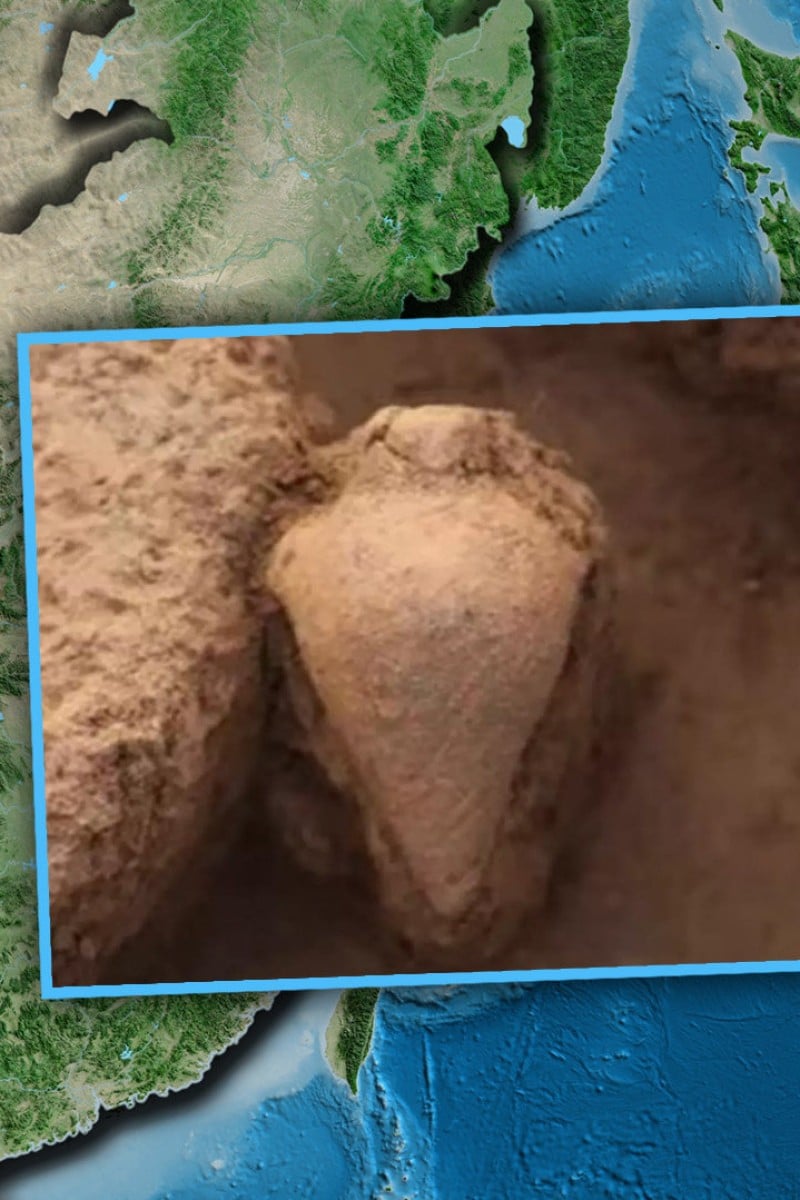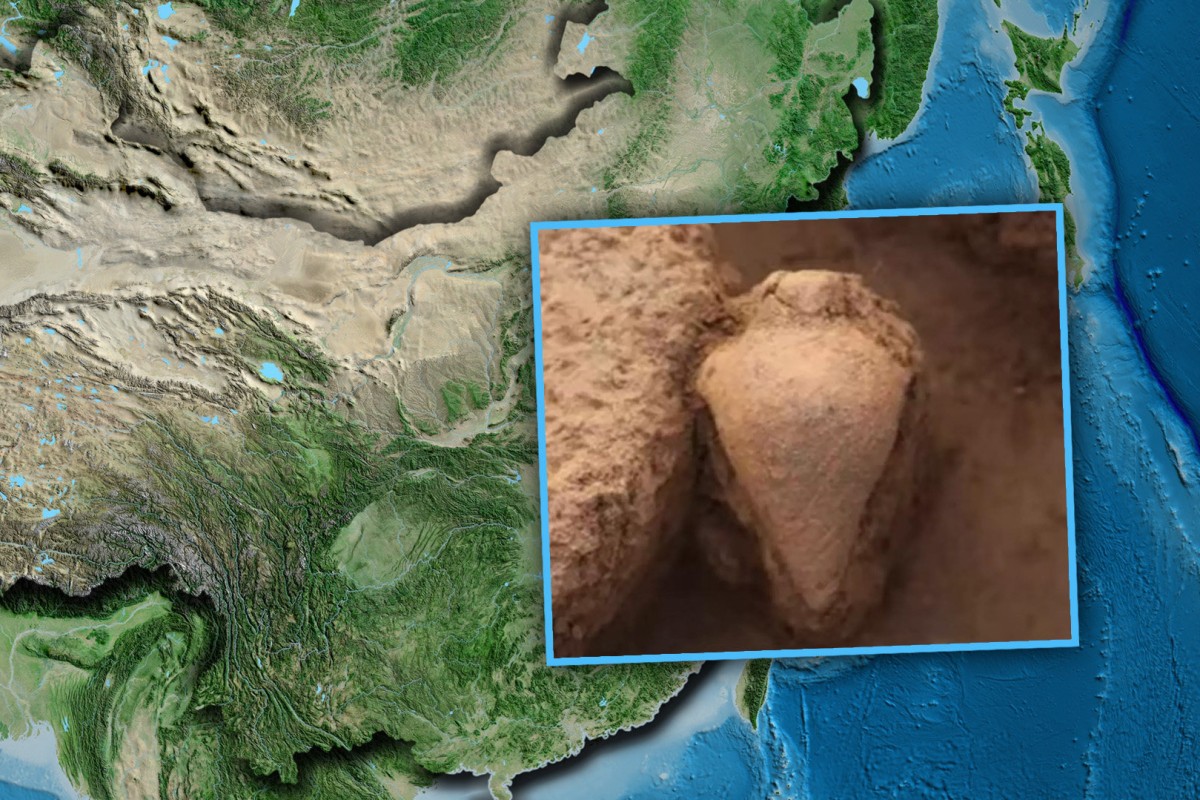
Study Buddy (Challenger): 7,700-year-old bottle offers insights into transition between ancient Chinese cultures
- Bottle belonged to Peiligang people but resembles later pottery style; scientists believe it may have been used to make yeast for alcohol fermentation
- This page is for students who want to take their reading comprehension to the next level with difficult vocabulary and questions to test their inference skills
 Scientists in China discover unique 7,700-year-old bottle that offers insights into the transition between ancient Chinese cultures. Photo: SCMP
Scientists in China discover unique 7,700-year-old bottle that offers insights into the transition between ancient Chinese cultures. Photo: SCMP Content provided by British Council
Read the following text, and answer questions 1-9 below:
[1] Archaeologists in China have unearthed an unusually-shaped 7,700-year-old bottle that offers unique insights into the relationship between two neolithic Chinese cultures. The container was unearthed in Henan province, central China, at a site associated with the Peiligang culture, which existed from around 7000BC to 5000BC and is considered one of the birthplaces of Chinese agriculture.
[2] The Peiligang people were also one of the oldest in China to make pottery, but the recent discovery is more similar to pieces made by the Yangshao culture (5000BC-3000BC). The Yangshao were an ancient people who lived along the Yellow River, considered the cradle of Chinese civilisation. This discovery provides fresh and crucial material evidence for exploring the origin [and development of] the relationship between the Peiligang culture and Yangshao culture, said Li Yongqiang, associate researcher at the Institute of Archaeology, Chinese Academy of Social Sciences, in mainland press reports.
[3] The bottle has a small mouth and pointed triangular bottom and similar objects have been discovered in Yangshao burial sites, ash pits and homes. The Yangshao culture, which succeeded that of the Peiligang, was famous for its development of pottery, and excavations suggest that the people buried their young in painted pottery jars. However, at 10cm long, the most recent bottle is shorter than similar objects from the Yangshao, and there is still debate about whether those bottles were used to carry water, help in fermentation or were simple burial treasures.
[4] Li hypothesised that, combined with previous evidence that the Peiligang had discovered how to make red yeast mould for fermentation, the bottles could have been a container used for making the yeast. Evidence of red rice yeast fermentation was presented in October 2023 in the Journal of Archaeological Science: Reports.
[5] Archaeologists argued that the presence of rice and a mould made of Monascus fungi indicated the Peiligang people were making a fermentation starter, called qu, which ancient people used to make alcohol. The alcohol could have been made using various ingredients, ranging from rice, millet, yams and Job’s tears, a type of grass.
[6] For the Peiligang people, rice was not overly important for subsistence, and it was often used to make alcohol, usually as part of a mortuary ritual. Making alcohol was a crucial reason rice cultivation spread in China around 9,000 years ago. Scientists believe the process started in the lower Yangtze River valley and spread to the northern Yellow River. “The Peiligang and Shuiquan sites in the middle Yellow River region serve as early examples of this diffusion process,” the study authors wrote.
[7] Other artefacts discovered at the recent Peiligang site, believed to be around 7,600 to 8,000 years old, included ostrich shells, red iron ore and stone items. These are important because the Peiligang site is one of the oldest villages discovered in China, meaning it provides a crucial piece of evidence in understanding how people transitioned from hunter-gatherer societies in the Paleolithic period to agricultural cultures in the Neolithic era. The village was first inhabited in 7000BC, and it was believed to have been abandoned in 5700BC after flooding.
Source: South China Morning Post, February 3
Questions
1. What is the site in Henan province known for according to paragraph 1?
2. According to paragraph 2, the discovery of the bottle …
A. unearths vital clues to the first evidence of agriculture in the Yangshao culture.
B. provides insight to how the Peiligang and Yangshao cultures developed and interacted.
C. demonstates how the Yangshao people thrived between 5000BC and 3000BC.
D. all of the above
3. In paragraph 3, what burial practice did the Yangshao people have?
4. Find a word in paragraph 3 that refers to a “discussion expressing different opinions”.
5. Name two characteristics of burial objects in Yangshao culture according to paragraph 3. (3 marks)
6. What gave Li the idea the bottle might have been used for according to paragraph 4?
7. According to paragraph 6, what was the Peiligang people’s staple food?
A. bread
B. alcohol
C. rice
D. information not given
8. What role did alcohol play in the lives of the Peiligang people according to paragraph 6?
A. It was used in ceremonies performed after someone’s death.
B. It was offered as a form of celebratory drink.
C. It was consumed for its medicinal properties.
D. It was a customary drink in all sorts of social gatherings.
9. Which of the following best describes the tone of this text?
A. argumentative
B. informative
C. persuasive
D. reflective
Answers
1. It is known for being associated with the Peiligang culture, which is considered one of the birthplaces of Chinese agriculture.
2. B
3. They buried their young in painted pottery jars.
4. debate
5. They have small mouths and pointed triangular bottoms.
6. Previous evidence that the Peiligang people had discovered how to make red yeast mould for fermentation gave Li the idea that the bottle could have been a container used for making red yeast.
7. D
8. A
9. B
